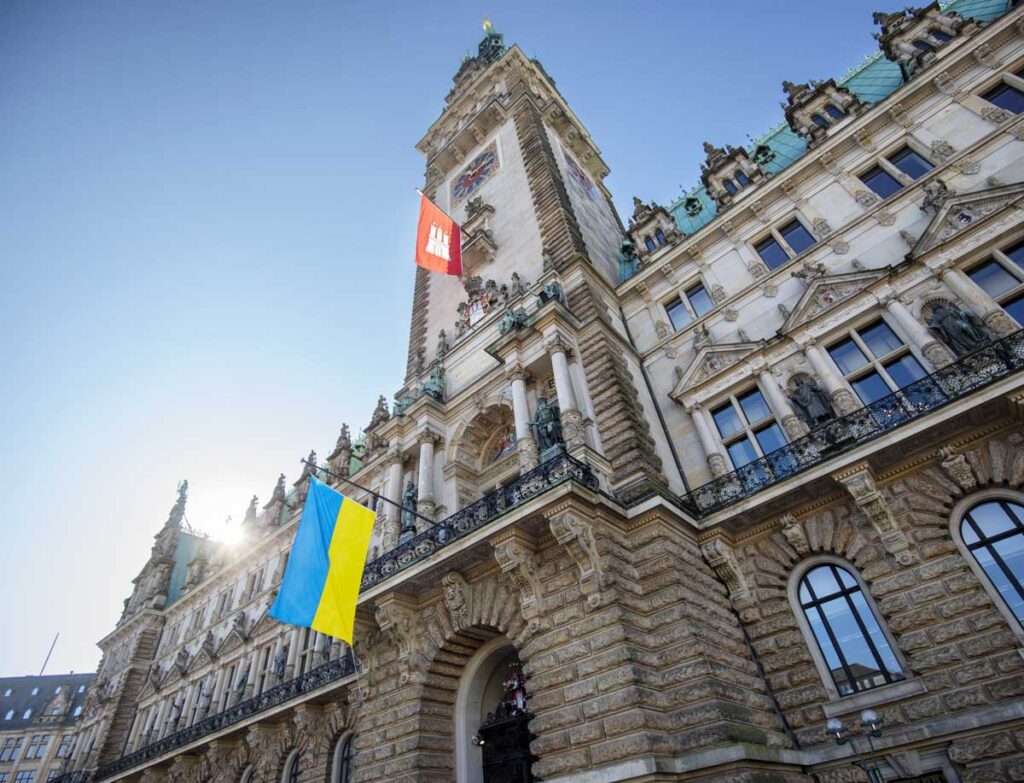THE TOWN HALL IN HAMBURG
An architectural showpiece of the Hanseatic city

A magnificent building for Hamburg: the town hall
Right in the heart of Hamburg, directly on the Kleine Alster, stands an imposing building: the Hamburg City Hall. The magnificent neo-Renaissance building is not only the seat of the Hamburg Parliament and Senate, but also a symbol of the Hanseatic city and a popular tourist attraction.
Its history stretches back to the 19th century, when a new city hall was needed for the growing city after the Great Fire of 1842. After the devastating fire that destroyed the old city hall, it took over 50 years for Hamburg to get a representative seat for its government again. Construction of the new city hall finally began in 1886 and took eleven years. The imposing building was officially opened on 26 October 1897.
Seven architects for one design
The design for the town hall was the work of a group of seven architects, including Martin Haller and Emil Meerwein. They chose the historicist style of the Neo-Renaissance, which was inspired by models from the German and northern Italian Renaissance.
Highlights inside and out
The façade of the town hall is richly decorated with sculptures, reliefs and coats of arms. Emperor Wilhelm I presides over the main entrance, flanked by allegories of strength and wisdom.
The magnificent details continue inside the town hall.
Some examples:
In the Bürgersaal (Citizens’ Hall), portraits of former presidents of the city council hang.
The Emperor’s Hall – named after the visit of Emperor Wilhelm II for the opening of the Kiel Canal – features striking ceiling paintings symbolising merchant shipping under the German flag. The walls are adorned with wallpaper covered in pressed cowhide.
The Phoenixsaal is named after the phoenix above the fireplace, which is supposed to symbolise Hamburg’s new rise after the great fire of 1842. In the Senate’s meeting room, on the other hand, light only enters through the large glass roof: this symbolises the ancient Germanic custom of the council meeting in the open air.
The Great Festival Hall is 46 metres long, 18 metres wide and 15 metres high. Five enormous paintings depict the history of Hamburg from 800 to 1900, and 62 city coats of arms from the old Hanseatic League adorn the walls. The three chandeliers, each with 278 lamps, weigh 1500 kilograms each.

Symbol of wealth and tradition
Hamburg’s town hall is not only an architectural masterpiece, but also a symbol of the Hanseatic tradition and civic pride of the city. It houses 647 rooms and stands on over 4000 oak piles. The 112-metre-high tower offers a magnificent view over the city and the harbour.

Conclusion
Visitors can take a guided tour of the town hall and learn more about its history and architecture. The town hall foyer, which hosts a variety of exhibitions, is also well worth a visit. Hamburg’s town hall is an essential port of call for anyone wanting to get to know the Hanseatic city. It is a testament to Hamburg’s rich history and civic pride.
